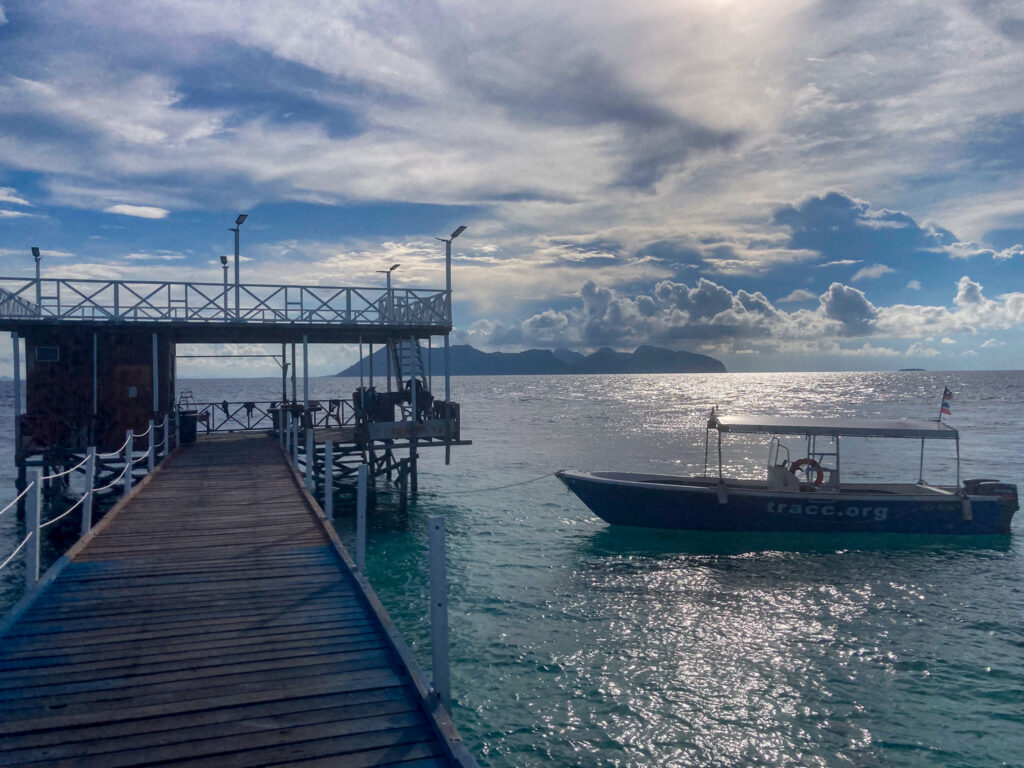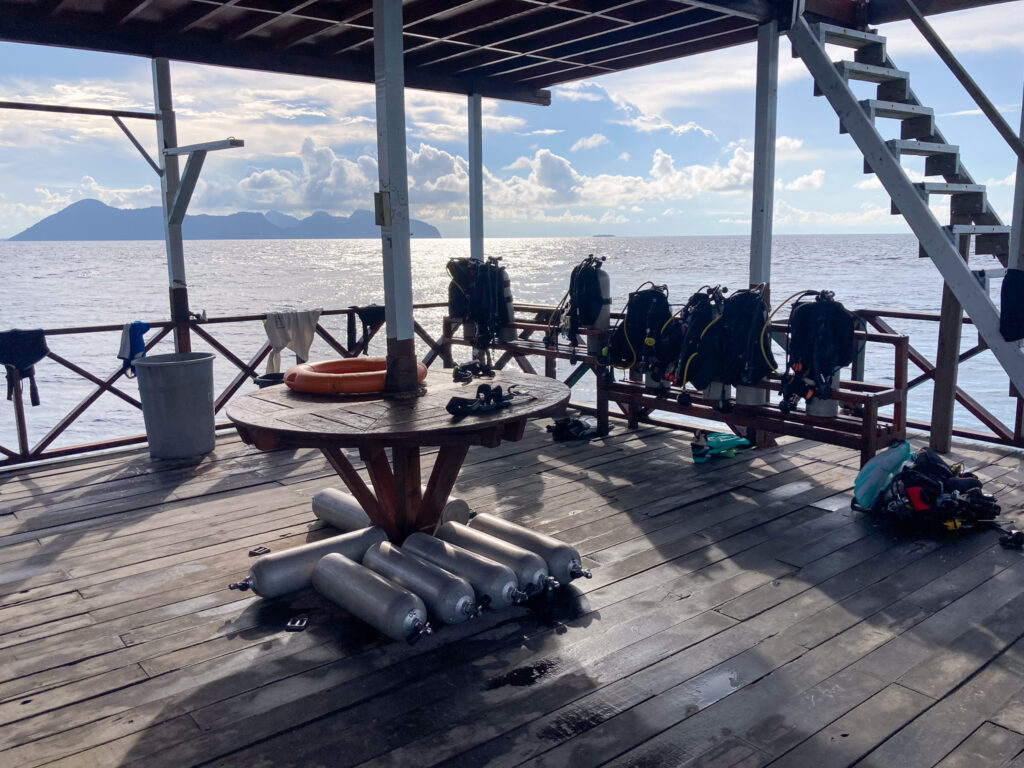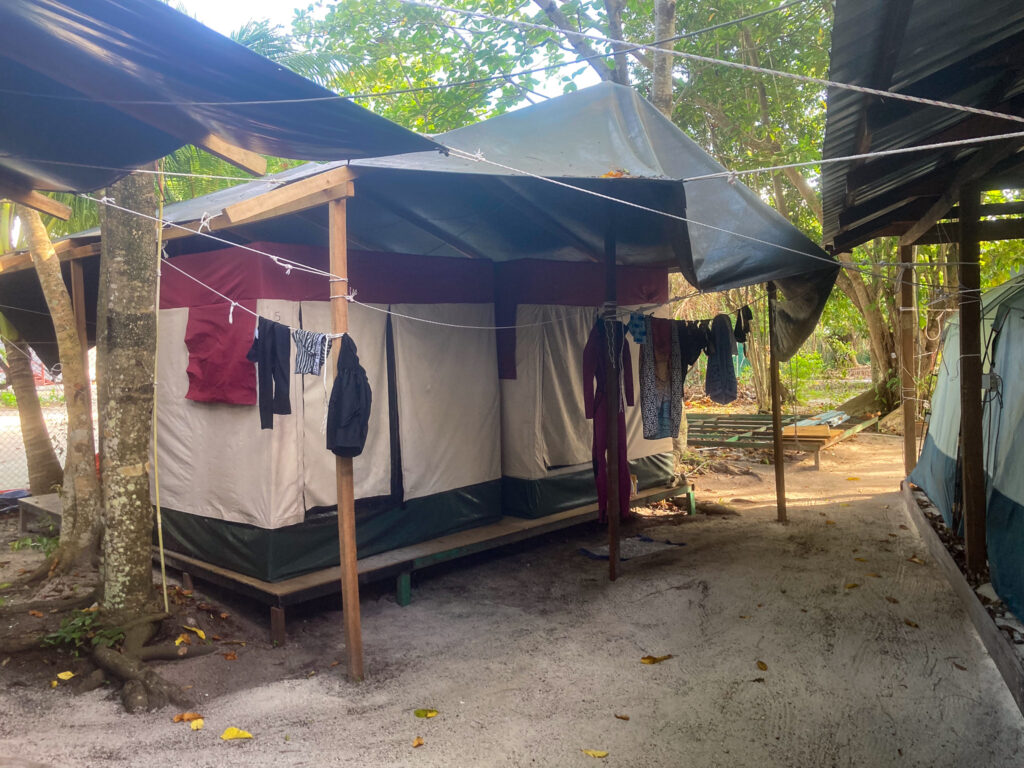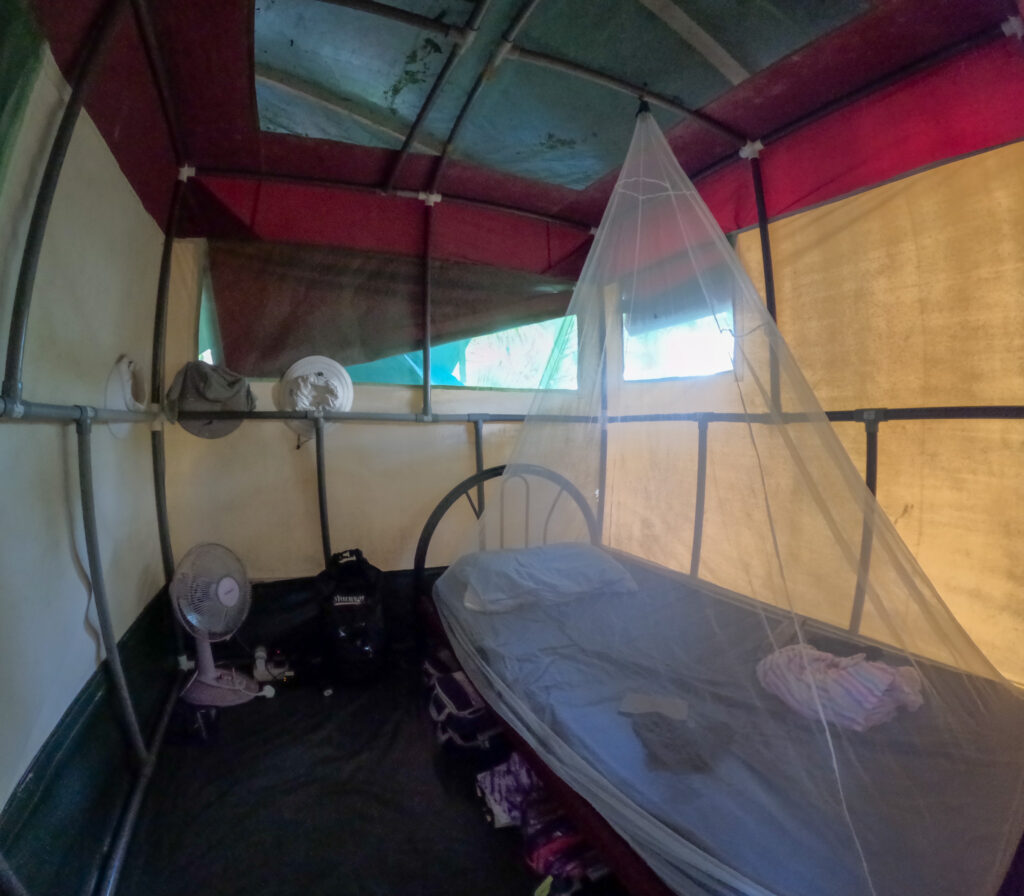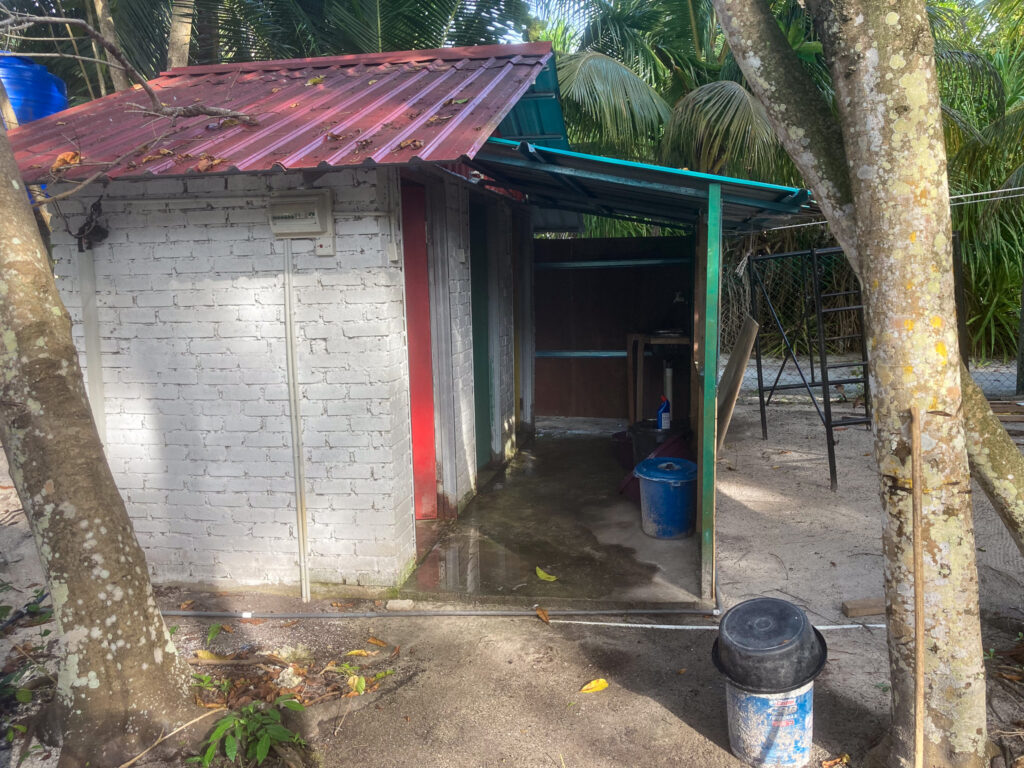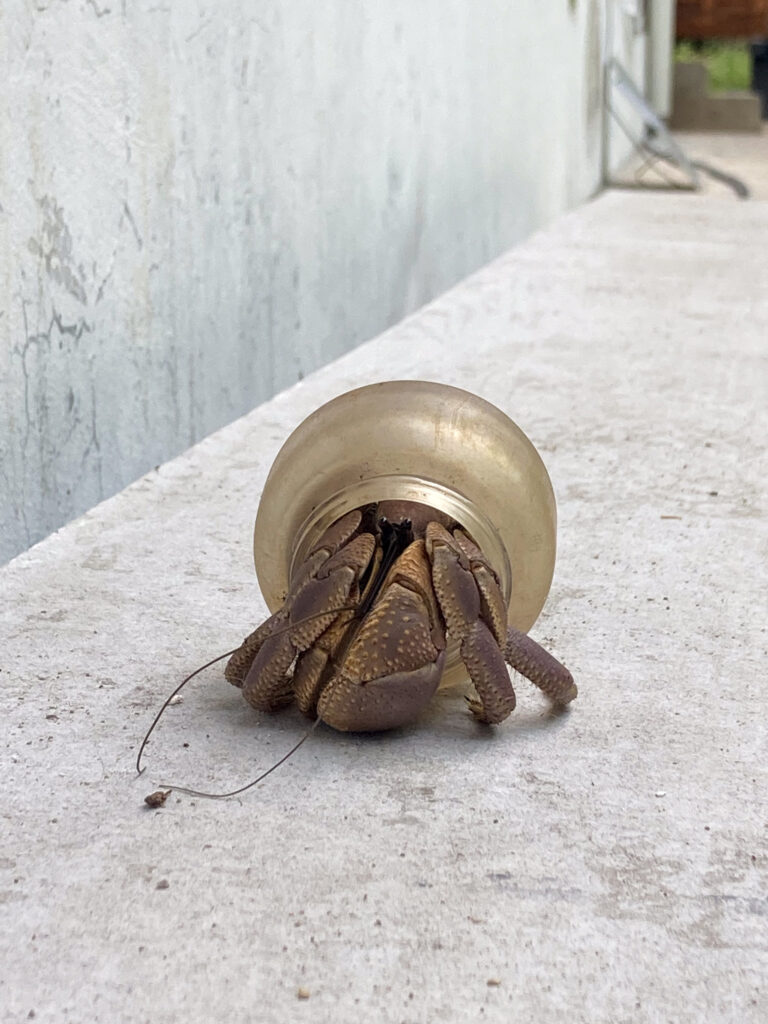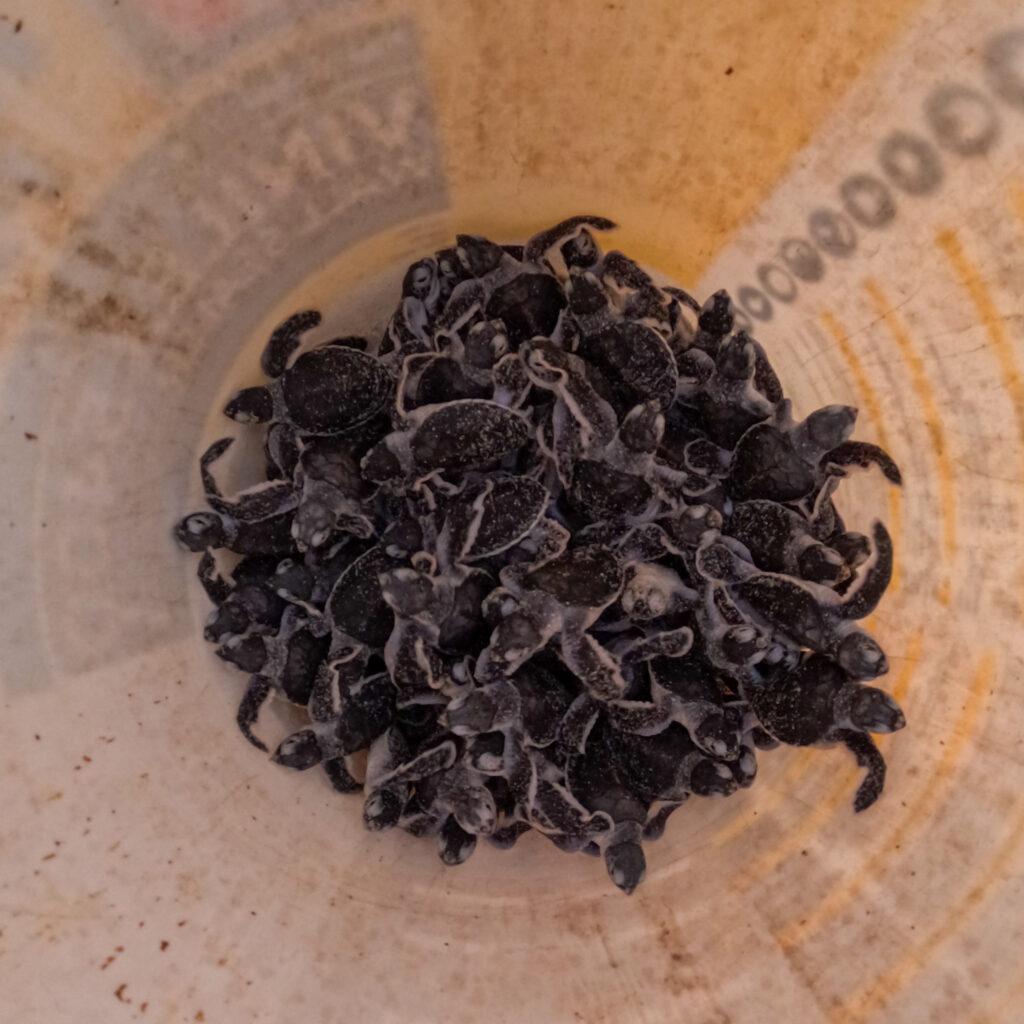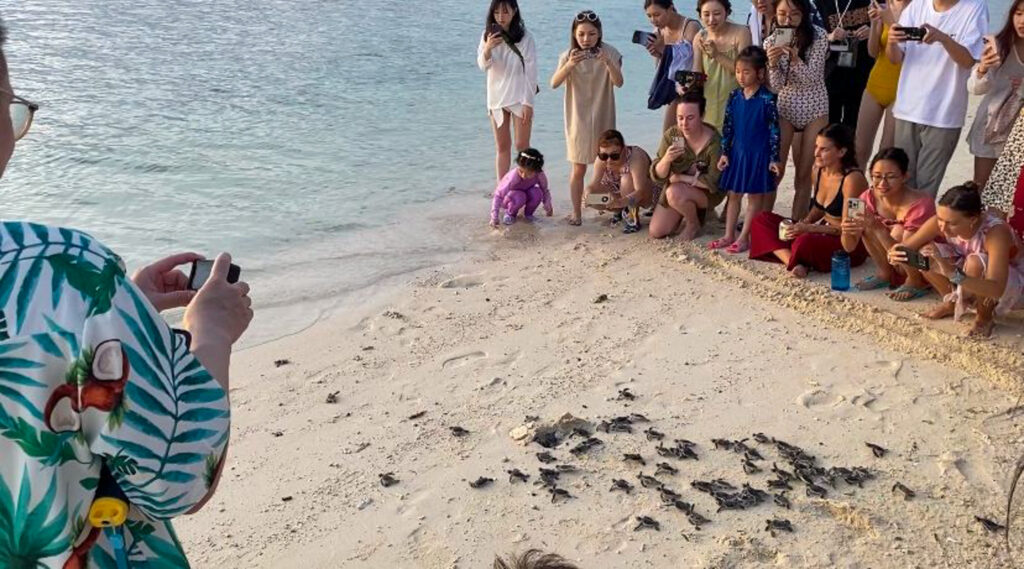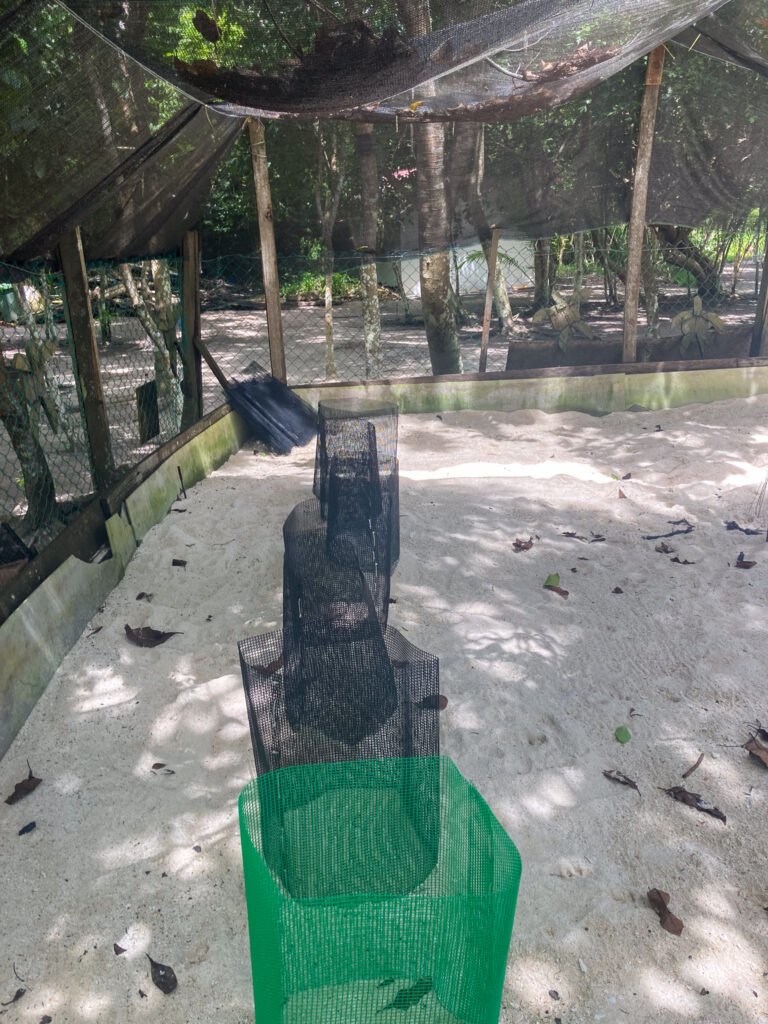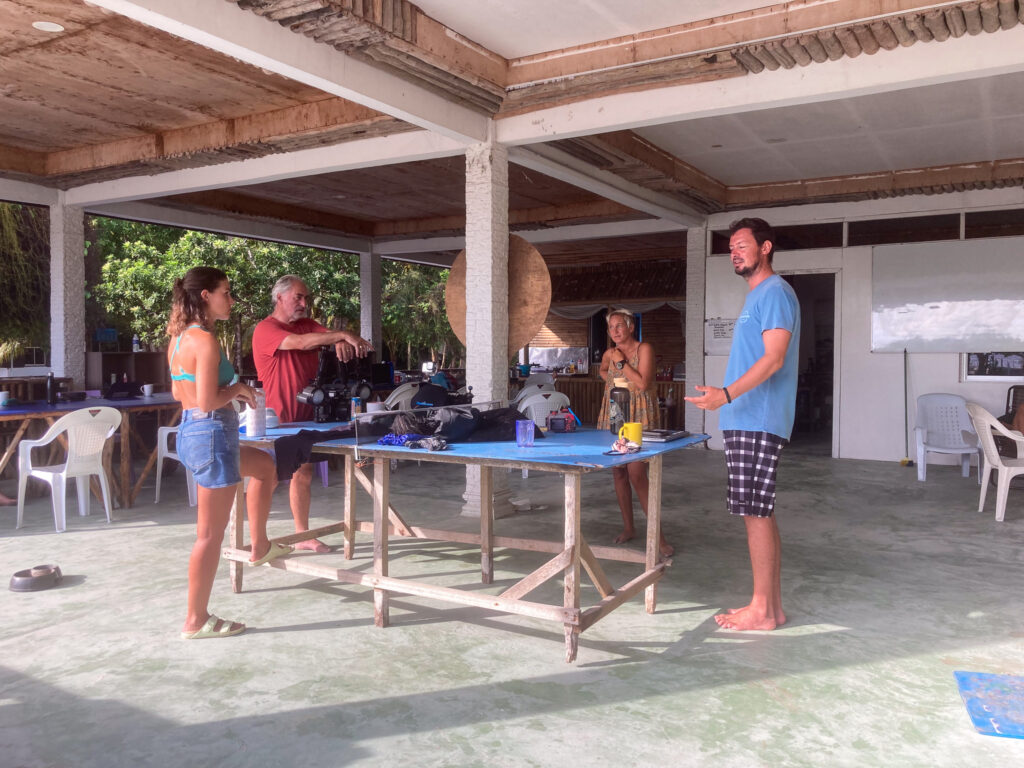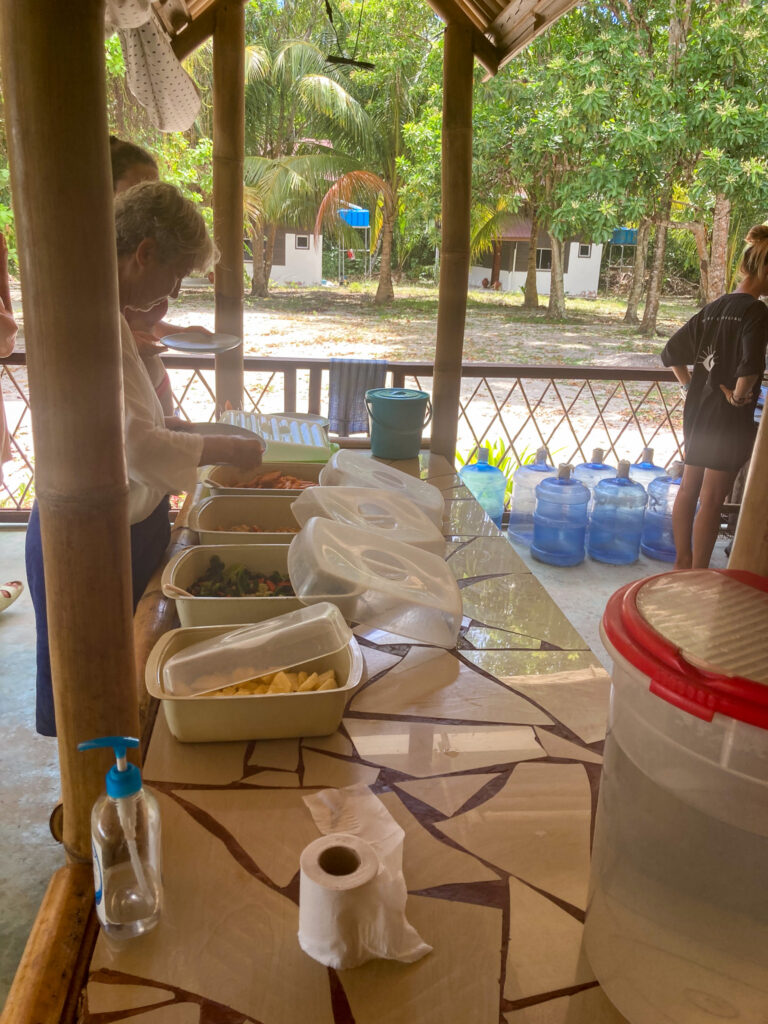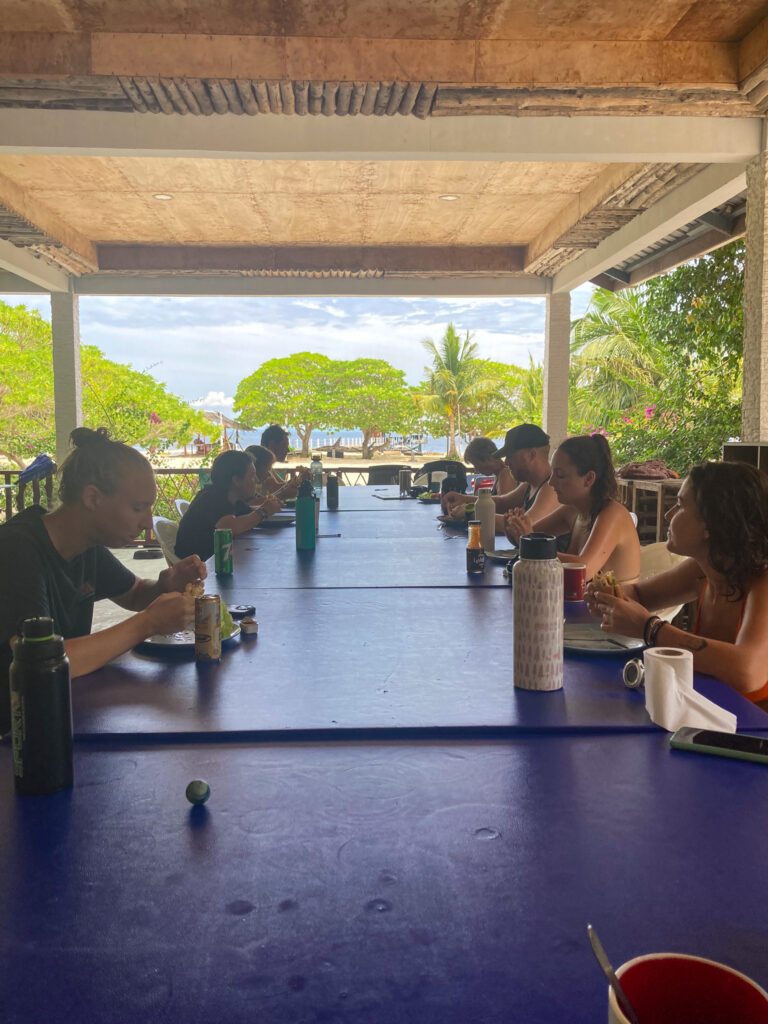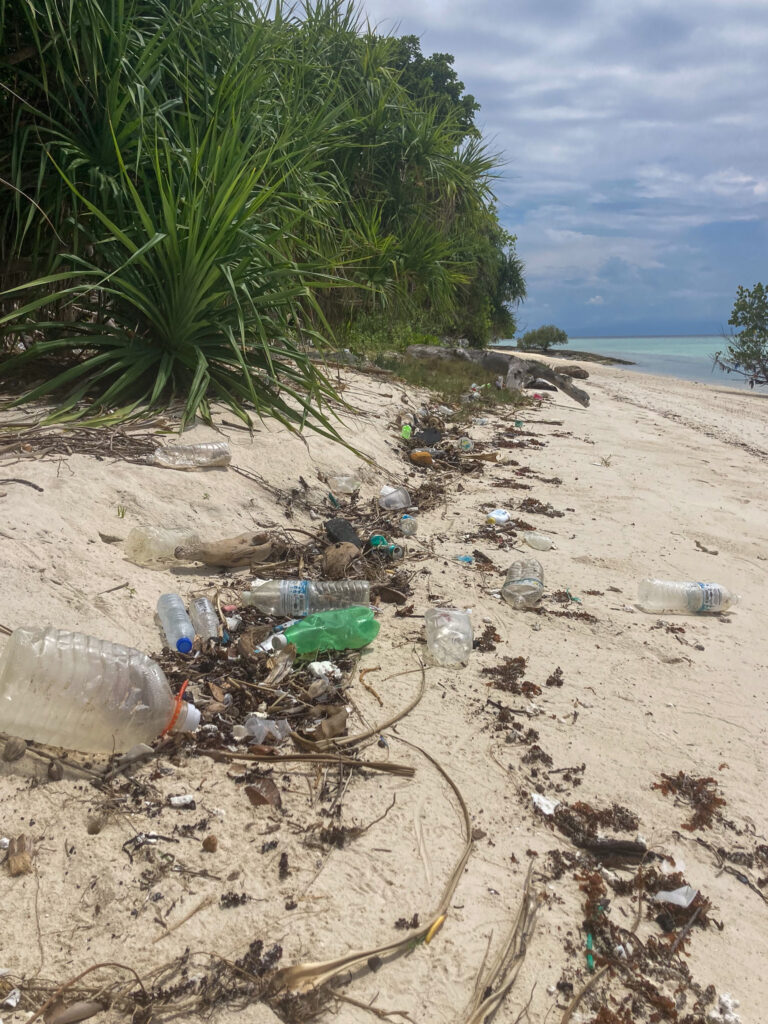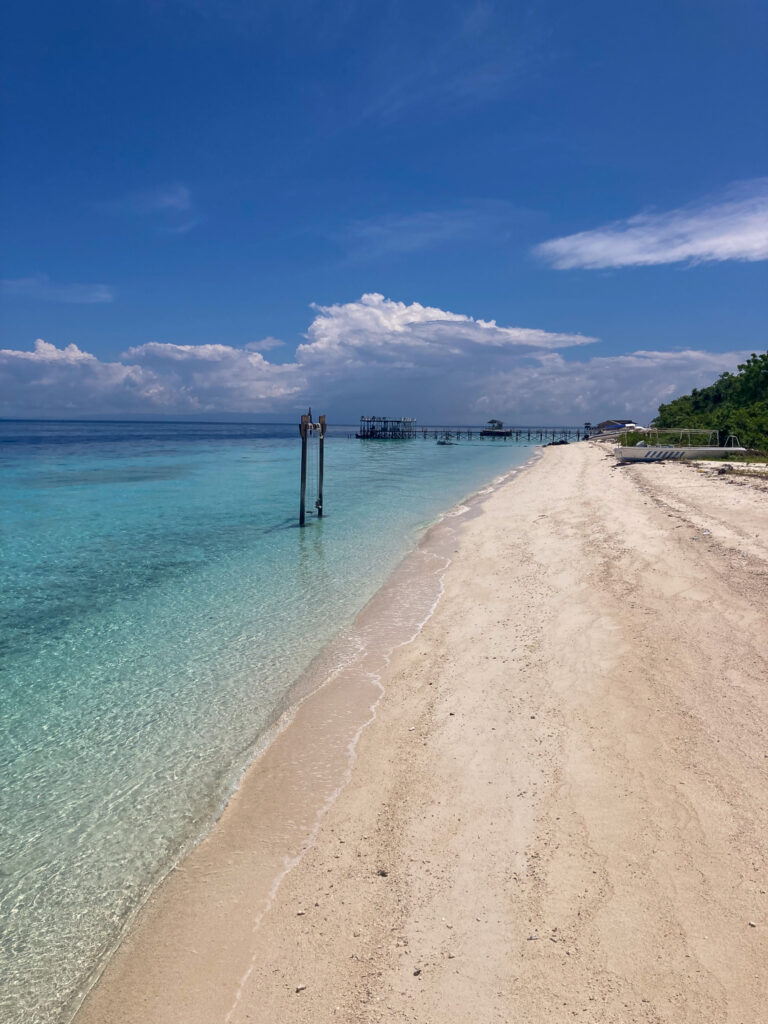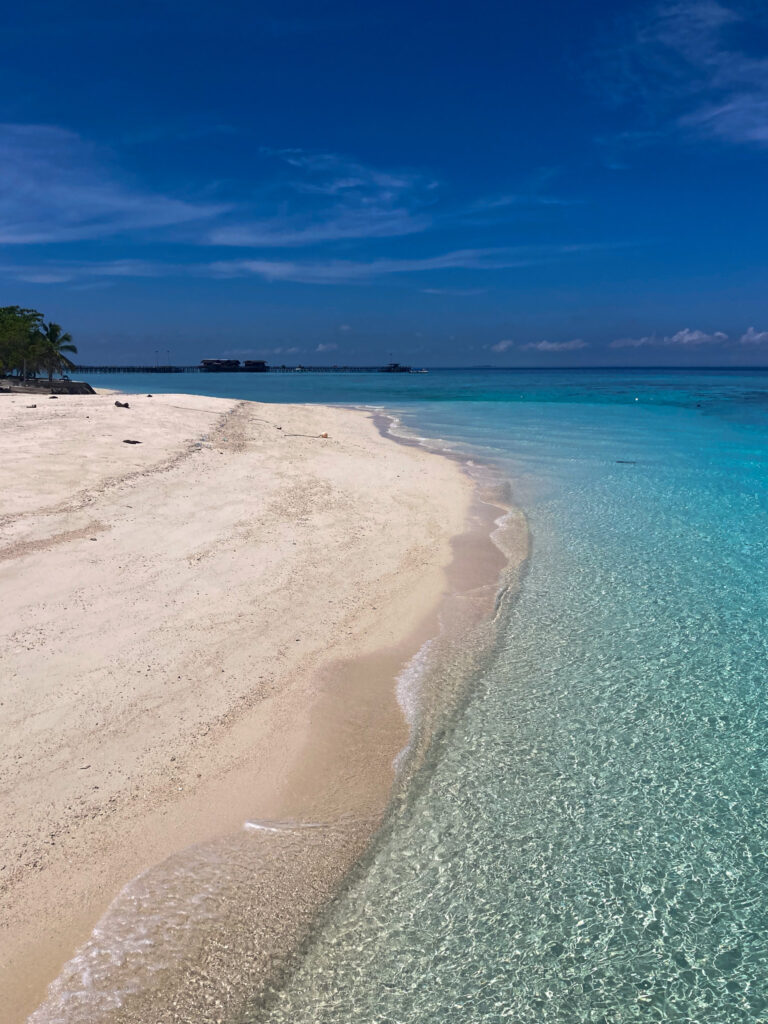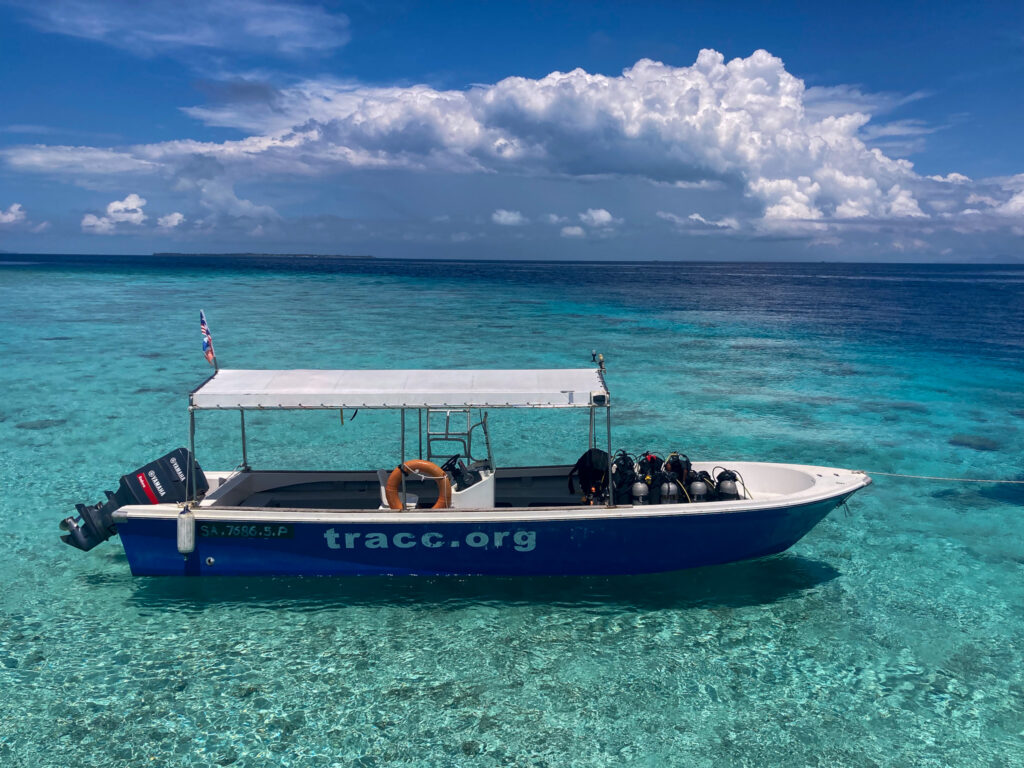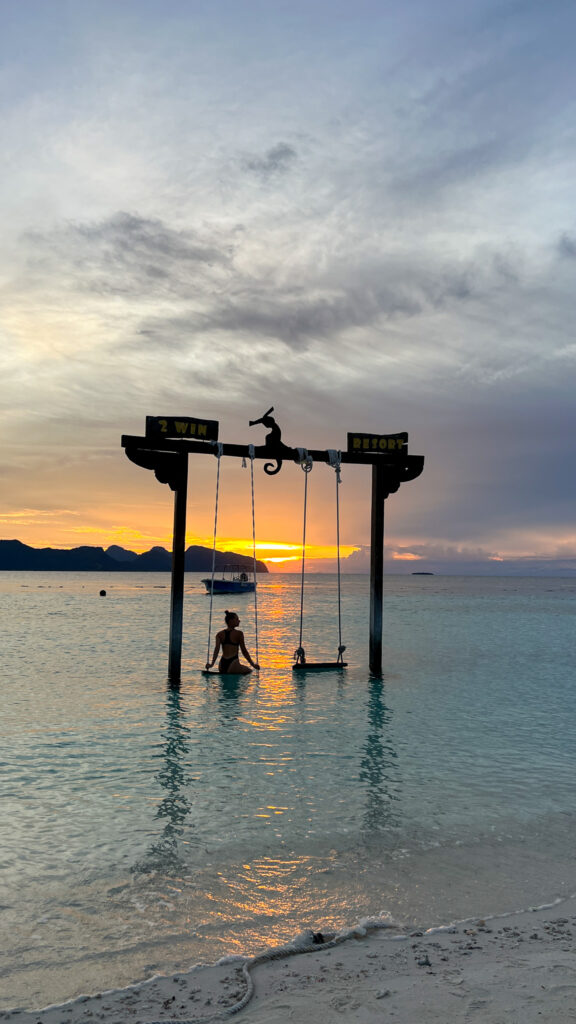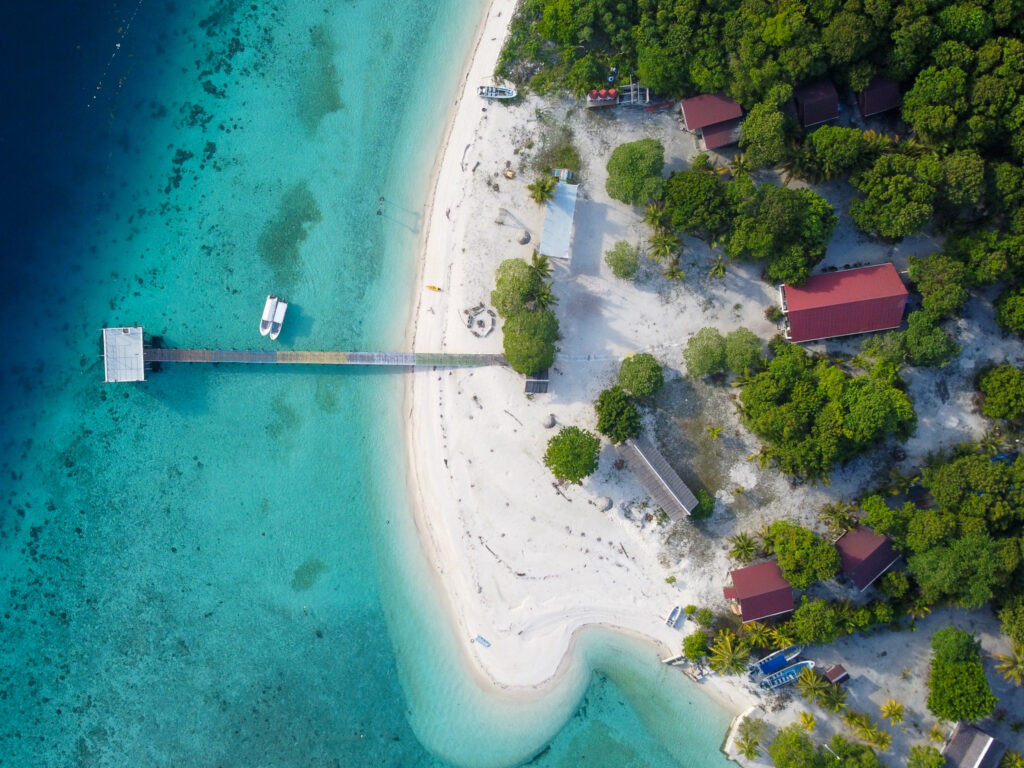After the eye-opening experience of arriving in Semporna, I arrived on Pom Pom Island with my new friend, Megan, and Robin, a director of the Tropical Research and Conservation Center (TRACC). We were briefly shown around the facilities which included a large, covered common area called Number 4 (I still don’t understand why) and a tent city with a separate, communal bathroom/shower. Megan and I had our own tents which were cubes of 7 feet on each side. Robin explained they began custom-making tents of more durable fabric because camping tents only lasted a couple of months with constant sun exposure.
The tent rooms were basic with a twin-sized cot, fan, and light but compared to sharing a small cabin on SV Millennium, it felt very spacious. The bathrooms were also basic with just a toilet and pipe sticking out of the wall to serve as a shower but felt like a step above those in the Langkawi shipyard.
After settling in Megan and I threw on our bathing suits to swim and wash off the sweat and filth of a travel day. We made our way to the end of the dock, which housed the dive shop, and jumped off. The water felt fantastic and we chatted for a while about how we found ourselves here.
Megan is 29 and originally from Michigan but moved to Hawaii for college and eventually dropped out when she began making money as a model and photographer. Eventually, she built a following and name for herself and now makes a full income from brand partnerships and advertisement campaigns. She often has opportunities to go places and do things that most people don’t have access to so this year, she wanted to spend her time documenting organizations, like TRACC, that take volunteers. She also partnered with PADI, the dive organization, to film her time at TRACC to show on their social media channels. I was impressed by Megan’s story and her ability to travel around the world and get paid to do cool stuff.
As the sun was going down, Robin came to inform us that we arrived on a special day, there would be a baby turtle release soon! Megan and I dried off and made our way to the neighboring resort where a group was gathering. One man emerged with a bucket and drew two lines in the sand, instructing everyone to stay outside and out of the water. Then, he tipped the bucket and about 70 baby turtles scrambled to the water’s edge. I couldn’t imagine seeing anything cuter! The event lasted about one minute as the slowest turtles finally made their way to the sea, only to pop their head up for one final breath before disappearing.
After the excitement of the release, Megan and I gathered with the other volunteers in Number 4 to sit down for dinner. Breakfast was self-serve oatmeal but lunch and dinner would be served every day, buffet style with a meat and vegetarian option. We sat with about ten other volunteers of various ages but primarily from Europe. Volunteers come on Mondays and typically stay anywhere from one week to several months. One woman, from Spain, had already been there three months and was planning to stay another three.
Exhausted from overnight travel, both Megan and I called it an early night. The next we began our orientation to TRACC and Pom Pom Island. Robin showed us a presentation of the program’s history and some best practices to keep up safe and comfortable on the island. Although the island was tiny, there were many venomous creatures to be aware of, and even things like little scrapes from coral could send us to the hospital if we didn’t take care.
After lunch, Megan and I went on two introductory dives: the first to the house reef near the dock and the second to the artificial reef sites the program had been developing. It was nice to be in the water again and I estimated the last time I had been scuba diving was in French Polynesia, almost a year ago! Some of the areas underwater felt a little post-apocalyptic and it was easy to see the loose coral fragments and rubble resulting from the dynamite fishing. As we swam to the areas where artificial reefs had been installed, it was awesome to see the amount of coral and resulting marine life that congregated in this area. It just goes to show that when you give nature a fighting chance it will come back if it can.
After the dives, we sat down once again for dinner then joined the group for a bonfire on the beach. At 10 pm Megan and I joined Robin for our first turtle walk. Every night, a small group is assigned to walk around the island to look for signs of turtle nesting. The walk only took about an hour and we set off in a counterclockwise direction from the TRACC property.
Robin explained that although around 200 turtles come to Pom Pom Island to nest, development has left only a small part of the island accessible. Turtles need to lay nests above the high tide to prevent the eggs from getting flooded and washed away but most of the neighboring resorts have constructed impassable retaining walls to prevent erosion while giving their guests waterfront views. As we entered a small stretch of uninhabited beach, I realized that the only place for turtles to lay their eggs is completely covered in trash.
Robin pointed out a few turtle tracks and how to tell which species of turtle they were and if they had actually laid a nest or just came to scope out a potential nest site. The tracks we saw seemed to be a day or two old and we continued on our walk. If we stumbled upon a fresh set of tracks or a nesting turtle, we would need to relocate the nest to the hatchery in order to protect it from poaching. I knew some Malaysians ate turtle eggs, believing them to boost health, sexual performance, and fertility but the island didn’t have a local village, just some resorts and a police outpost for border security. Who was poaching these turtle eggs?
The greatest threat to the turtle nests on the island and the reason for the nightly turtle walks was actually the police! Despite repeated complaints to the authorities, it was not uncommon to find the local police digging up nests or see their boot tracks in the nesting areas. At first, I could not believe this but would come to experience it firsthand.
Between learning about current dynamite fishing practices and sea turtle egg poaching, my first two days in Borneo opened my eyes to the state of the world we are living in now. All I could do now was continue learning and start diving into the volunteer work, pun intended!


